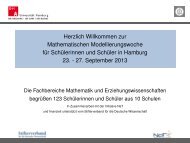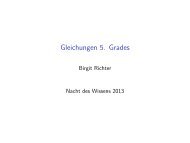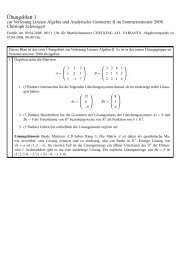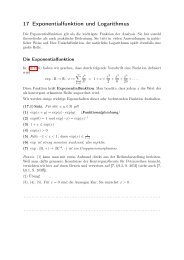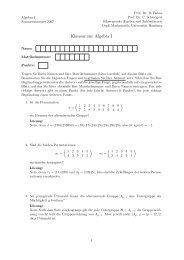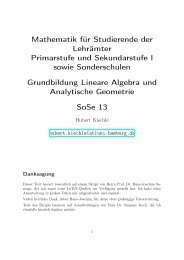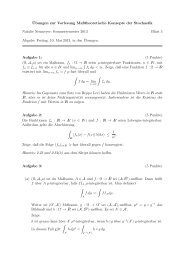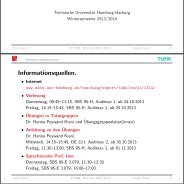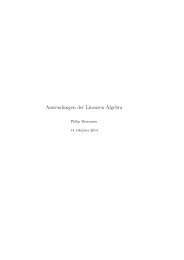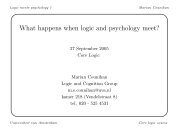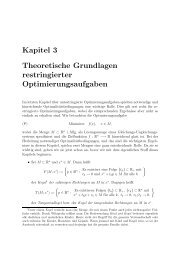pdf file
pdf file
pdf file
Create successful ePaper yourself
Turn your PDF publications into a flip-book with our unique Google optimized e-Paper software.
Corollary 4.4.3.<br />
We have uS(u) = S(u)u. This element is central in H.<br />
Proof.<br />
One directly sees that the element Su ∙ u is central: h ∙ S(u) ∙ u = S(u) ∙ u ∙ h. For h = u, we get<br />
u ∙ Su ∙ u = Su ∙ u ∙ u and, since u is invertible, the claim.<br />
✷<br />
We recall from proposition 2.5.13 that a finite-dimensional module V over a Hopf algebra<br />
with invertible antipode has a right dual V ∨ defined on V ∗ = Hom K (V, K) with action S(h) t<br />
and a left dual ∨ V defined on the same K-vector space V ∗ with action by S −1 (h) t .<br />
Proposition 4.4.4.<br />
Let (H, R) be a quasi-triangular Hopf algebra and u the Drinfeld element. Then we have, for<br />
any H-module V , an isomorphism of H-modules<br />
j V : V ∨ → ∨ V<br />
α ↦→ α(u.−)<br />
where by α(u.−) we mean the linear form v ↦→ α(u.v) on V .<br />
Proof.<br />
The map j V is bijective, because the Drinfeld element u is invertible. We have to show that it<br />
is a morphism of H-modules: we have for all a ∈ H and α ∈ H ∗ , v ∈ V<br />
〈j V (a.α), v〉 = 〈a.α, u.v〉 = 〈α, S(a)u.v〉 = 〈α, S 2 (S −1 (a))u.v〉<br />
(∗)<br />
= 〈α, uS −1 (a)v〉 = 〈j V (α), S −1 (a).v〉 = 〈a.j V (α), v〉 .<br />
✷<br />
We comment on the relation to Radford’s formula:<br />
Remarks 4.4.5.<br />
1. We have for the coproduct of the Drinfeld element u = S(R (2) )R (1)<br />
Δ(u) = R R 21 (u ⊗ u) .<br />
2. One can show that g := u ∙ (Su) −1 is a group-like element of H and that<br />
S 4 (h) = ghg −1 .<br />
For a proof, we refer to [Montgomery, p. 181].<br />
Now denote by a ∈ H and α ∈ H ∗ the distinguished group-like elements. Set<br />
Then g = a −1 ˜α = ˜αa −1 .<br />
˜α := (α ⊗ id H )(R) ∈ H .<br />
We now turn to a subclass of quasi-triangular Hopf algebras for which the braiding obeys<br />
additional constraints.<br />
Definition 4.4.6<br />
Let (H, R) be a quasi-triangular Hopf algebra.<br />
102




